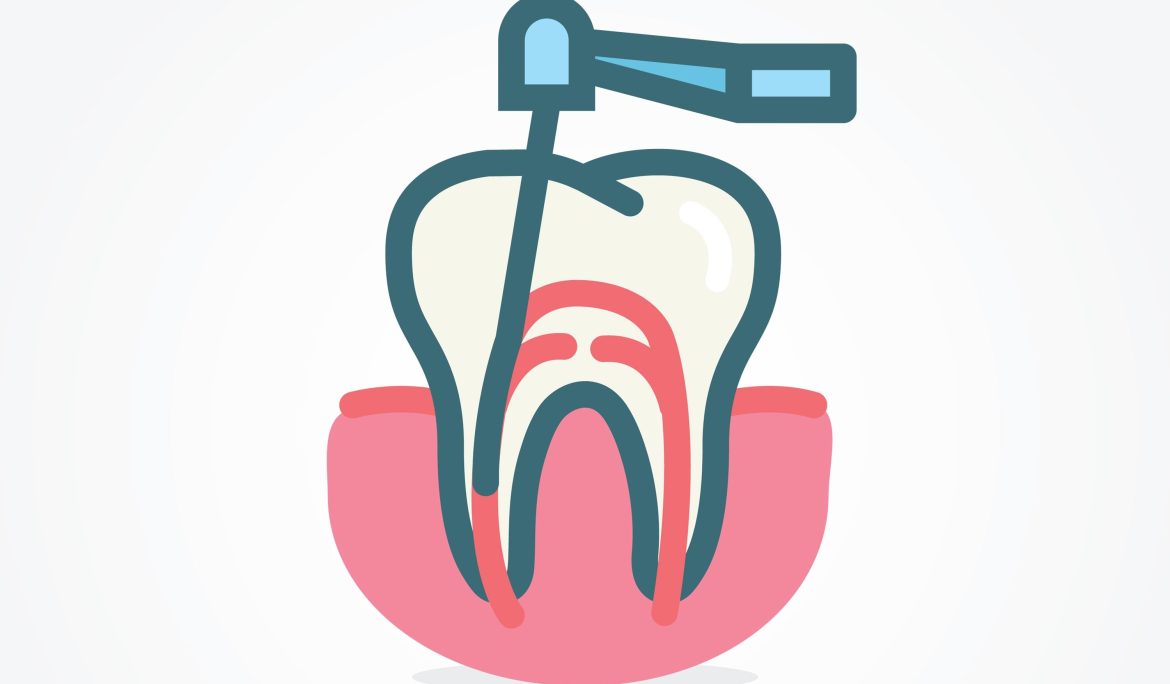DENTAL FILLINGS VS ROOT CANAL TREATMENT FOR TOOTH DECAY
Last time we talked about dental fillings as a modality to restore decayed teeth, if you missed it, you can click here. There is also another treatment option and that is root canal treatment. To understand when each one is used, we shall take a step back and look at the structure of the tooth.
The tooth is divided into several layers i.e., enamel, dentine, pulp as shown in the image above. The enamel is the outermost layer of the tooth and is the hardest. It is composed of mostly inorganic matter; the organic component is very negligible and does not have a nerve supply. Thus, when tooth decay is limited to this layer, it does not present with any symptoms except for the fact that you may see a discoloration or a hole and sometimes if it is on the side of the tooth adjacent to the next you may experience food particles getting stuck in such areas. How is treatment done in this kind of decay? A dental filling is sufficient for this. The decay is cut
cleaned and a filling is placed. To learn more about the process of placing a filling click here.
The next layer is the dentine. When a cavity reaches this layer of the tooth you begin to experience some sensitivity and the intensity of the sensitivity increases with increasing depth of the cavity. This is because the dentine has more organic matter and contains nerves so is capable of sensation. How do we treat a cavity that has reached this layer? Almost similar to the previous one, the decay is cut and cleaned and the difference comes in here where before placing the final filling, a special medicament known as a liner is placed. The importance of this is that it helps reduce the sensitivity that was a result of the cavity reaching this layer. Worth noting is that sometimes the cavity is so deep into the dentine and in the process of removing the decay, the dentist may expose the innermost layer that is the pulp and the tooth may require a root canal treatment. In this situation the dentist will inform you in advance before the procedure.
The final layer of the tooth is the pulp. This is the innermost layer of the tooth and this layer is made up of mainly nerves and blood vessels. When the decay gets to this point, it is usually very painful. How is it treated? Root canal treatment. A root canal treatment is the process where all the nerves and blood vessels of the tooth are removed, the area is cleaned and shaped and afterwards sealed to prevent bacteria and microorganisms from growing inside and so all symptoms are eliminated.
Root canal is typically done in three stages. On the first visit, the cavity is cleaned and all the decayed portions of the teeth are removed, once it is all cleaned up. Now that there is better visibility, the canals and their contents are identified, which include nerves and blood vessels, and removed. This elimination is important as it ensures that the tooth does not experience any sensation once the root canal treatment is complete. After this step,some medication is put in the canals of the roots to stop any bleeding or kill any bacteria present. A temporary filling is done and you are discharged.
The second visit involves removing of the filling and then the canals are cleaned and shaped with the aid of files to ensure a smooth surface all the way to the end of the canal. An xray will be done to ensure the entire length of the canal has been cleaned. The canals are then medicated, a temporary filling is done and you are discharged.
The third visit usually is the last. Factors that may prevent it from being the last stage may be issues like if you still have pain on the tooth or there is still an infection. In the absence of these issues, we close up the canals in this stage. This is done with the aid of a special material which covers the entire length of the canal. Once this material has been placed, a permanent tooth filling is placed and curved to the shape of your normal tooth. With this, the entire root canal treatment process is complete.
In summary, knowing whether you’ll need a dental filling or a root canal treatment depends on the depth of the cavity and the presence of pain. Visit us today to learn more.















